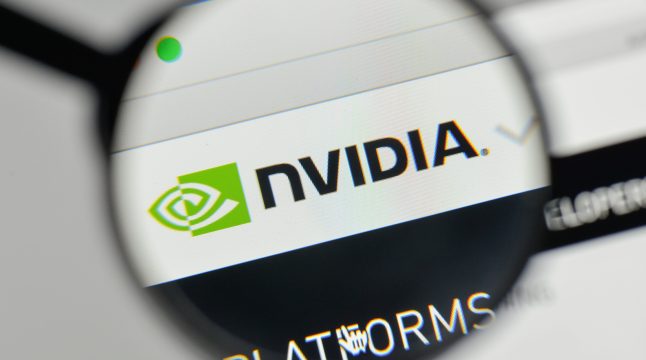The AI Arms Dealer: Nvidia’s Path To $5 Trillion And Beyond

Image courtesy of 123rf.com
In late 2024, we posited that AI is not a bubble—centered on Nvidia (NVDA)—given the concerted effort to make AI happen. Namely, through unprecedented public-private partnerships (PPPs). Subsequent capital flows into energy and data centers have only strengthened that thesis.
For investors, this consolidation of influence and infrastructure flows directly through Nvidia, serving as the de facto arms dealer of the AI era, underpinning every AI model and data center needed to drive this transformation.
Now that Nvidia became the world’s first $5 trillion company on Wednesday, let’s examine if there is room for even more growth, or if this is an imminent prelude to bubble-popping.
The Real Logic Behind AI Investing
Beyond AI’s commercial applications for content generation and productivity boosts, AI represents the holy grail of governance. Human-centric governance tends to be inconsistent, reactive, noisy, and to have a high overhead. In contrast, AI-centric governance has the potential to integrate vast data streams from economics, social behavior, and infrastructure in real time.
This comes hand in hand with policy simulation outcomes and continuous improvement enabled by machine learning. Most importantly, AI gives tiny groups multiplicative power, allowing them to exert their will on a scale otherwise impossible. This process is already underway, with tight coordination among OpenAI, Palantir, and Larry Ellison’s Oracle.
Such is the public-private level coordination revolving AI that Harvard economist Jason Furman calculated that cutting the AI-related investments would’ve resulted in an annualized GDP growth of only 0.1% for the first half of 2025.
According to the Stanford Institute for Human-Centered AI (HAI), corporate AI investments reached $252.3 billion in 2024, more than 8x the $31.2 billion in 2022, when the AI hype began. Yet, September’s Gartner research points to $1.5 trillion in worldwide AI spending in 2025, putting the last year to shame.
Is Circular Financing a Concern?
Although the “AI is not a bubble” thesis has played out as expected so far, there is still a concern of overplaying the narrative itself. In other words, mistaking coordinated industrial policy for organic market demand, where rising valuations justify escalating capital commitments in a self-reinforcing loop.
This concern became more pressing when Nvidia pledged up to $100 billion in OpenAI’s data centers on September 22nd. Nvidia’s rival, AMD, soon joined the OpenAI partnership with a $34 billion pledge on October 6th, contributing its MI300X and MI350X chip series.
Yet, this represents only a tiny portion of overall circular financing between Nvidia, Oracle, Microsoft, OpenAI, Coreweave, and data center leasing.
Wall Street analysts are already likening this circular capital flow to the dot-com bubble building up in the late 1990s, which burst in March 2020. In the most recent appearance on CNBC’s Squawk Box on Tuesday, the co-founder of Microsoft, Bill Gates, noted that:
“Absolutely, there are a ton of these investments that will be dead ends.”
However, just as investing in the internet turned out to be justified, the same is the case for AI commitments, according to Gates:
“But you have a frenzy. And some of these companies will be glad they spent all this money. Some of them, you know, they’ll commit to data centers whose electricity is too expensive.”
Nonetheless, despite the circular financing—an artifact of coordination to bring AI to fruition—Nvidia still has room for improvement.
The Nvidia GPU and Energy Bottlenecks
On Tuesday, Amazon (AMZN) announced it would cut around 14,000 middle managers, representing 4% of its workforce, potentially expanding to 30,000. Long-term, through 2033, Amazon plans to automate 500,000 jobs. As we explored recently, this boosts the company’s bottom line despite the recent AWS-related outage.
At a glance, Amazon’s layoffs fit into the AI narrative, but investors should not mistake them as mono-causal. Throughout 2024, Amazon reported a severe AI GPU shortage in its retail division, to the point that the company launched ‘Project Greenland’ to optimize the allocation of compute resources.
In Q2 2025, Amazon committed $31.4 billion to AI capital expenditures (capex). For shareholders, this is a bitter, margin-preserving pill to swallow, which has to be offset by cost-cutting—layoffs. In other words, this is likely the primary driver for Amazon’s layoffs, not the AI replacement of human work per se.
And the willingness to do layoffs points to an ongoing Nvidia GPU shortage across the Big Tech cluster. After all, if Amazon has this problem, the entire Big Tech cluster likely does as well. In turn, Nvidia is expected to continue seeing GPU sales surge.
Contributing to the $5 trillion market cap milestone, Nvidia CEO Jensen Huang hinted as much on Tuesday at the GTC conference, when he said he expects half a trillion dollars worth of AI GPU sales. This estimate combines the existing cutting-edge Blackwell chips and the 2026 launch of Rubin chips.
Previously at July’s CDNLive conference, Jensen also noted that “power generation is going to be a big deal” as existing “power grids aren’t going to be enough to sustain the growth of this industry.”
This fits into our bullish thesis on nuclear power stocks, but it also points to an energy bottleneck. The implication for Nvidia shareholders is that the company’s next challenge is not outcompeting AMD or Intel on performance per watt, but ensuring its customers can obtain those watts in the first place.
At the same time, as every incremental data center expansion runs up against the physical limits of grid capacity, Nvidia’s bottom line is supported by future scarcity.
More By This Author:
Roblox Stock Drops As Q4 And Full-Year Loss Forecasts Disappoint InvestorsEli Lilly Delivers Strong Q3 Performance, Raises Earnings Outlook
Merck & Co. Beats Expectations In Q3 2025, Lifts Full-Year Forecast
Disclaimer: The author does not hold or have a position in any securities discussed in the article. All stock prices were quoted at the time of writing.



